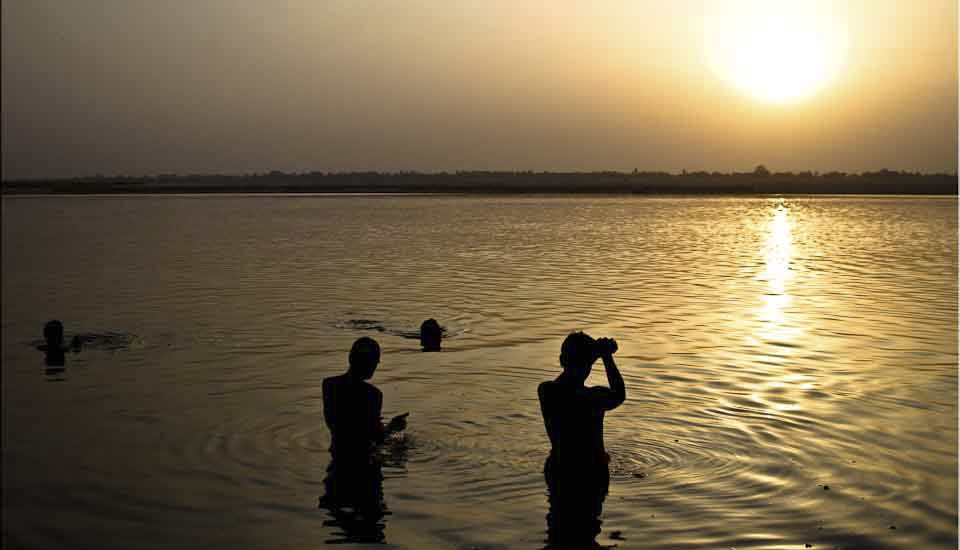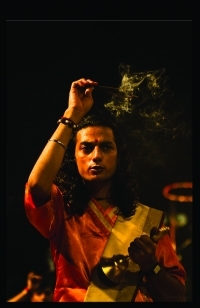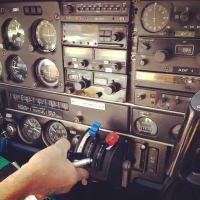.jpg)
Petra Theater
The monumental theater at Petra is a semicircular auditorium carved directly into the rosy rock. Stonemasons’ marks date the original theatre to the early first century AD, but it was then expanded after the Roman annexation in 106 AD. Older tombs, the remains of which can be seen on the smoothed back wall, were sliced into to make more space.
It was not yet 7:30am. I’m not a morning person, but I was excited!
Our bus was already in the car park outside the Petra Visitor Centre. In an attempt to beat the heat and the crowds, my fellow travellers and I were making our way into this magical ancient city early. We had gone on a walk as far as The Treasury with our guide the afternoon before (see: Petra: Nabataean Marvel), and had our tickets and our maps in hand for a day of independent exploration.
It is hard to know which is more beautiful: the colourful, variegated rocks themselves, or the magnificent Hellenistic architecture that is half-built, half-carved into the surrounding mountains and gorges. The city of Petra was both a necropolis and a busy, lived-in space: the Nabateans (Nabataeans) buried their dead in intricate tombs that were cut out of the rock, but they were also active traders, living onsite and growing wealthy through hosting passing caravans laden with frankincense, myrrh, and exotic spices. After the Roman annexation, the city’s temples and theater were further expanded; during the later Byzantine period, a colonnaded street and churches were added.
Petra was already an established city and the capital of the Nabatean empire before the 1st century BC. The Nabateans were masters at managing water: they built dams to slow flash-flooding; cisterns to store water though long droughts; and conduit systems to manage the flow around the network. The city – particularly this ingenious water management system – was significantly damaged by the Galalea earthquakes in 363 AD, making it unable to support its previous population. Mostly deserted by the 7th century, this once prosperous site was almost forgotten until a Swiss explorer – posing as an Arab – persuaded a Bedouin guide to take him to the ‘lost city’.
Of course, the city was not lost to those Bedouin who continued to live there until they were forcibly removed in 1985 – in time for UNESCO to list Petra and its Bedouin heritage for “Outstanding Universal Value”. Today, a few traders, souvenir sales-people, and pony-ride operators, still camp out in the area.
Almost 50,000 foreigners visit each year. Some years ago, I was happy to finally be one of them! Do join me for some exploration:
.jpg)
Walking into Petra
It is an almost two-kilometre walk through some of the more-than-a-thousand tombs in Petra to the start of the Siq – the kilometre long gorge – to the heart of the city.
.jpg)
Bedouin Selling Silver
Inside the Siq, Bedouin hawkers have local products for sale.

In the Siq
The Siq is stunningly beautiful a natural geological phenomenon.

Textured Canyon Walls
All around Petra, the rocks are endlessly intriguing.

Cleaners In the Siq
The colours and patterns of the canyon walls change at every turn.

Greenery in the Siq

Caravan Relief
These larger-than-life camel feet are part of what was a camel caravan relief sculptured in sandstone.

Lines and Curves
On both sides of the passage, there are rock-cut water channels from the original Nabatean water conduit system.

Another bend in the Siq

The Gorge Narrows
In places, the Siq is only 3–4 m (10–13 ft) wide.

In the Street of Façades

Tomb BD 69 in the Street of Façades
Considering these tombs were probably built between the last third of the 1st century BC and the middle of the 1st century AD, the carving is remarkably detailed.

Colours and Textures on Tomb BD 70

The Theatre
I love the rose colour of the seats in the cavea and the colourful striations in the rock face in the back around the ‘windows’ into the old tombs that were sliced open when the theater’s auditorium was enlarged.

Camels and Caves

Royal Tombs
High on the western slope of the Jabal al-Khubtha, the impressive façades of some large mausoleums are carved into the rock.

The Urn Tomb – Tomb BD 772
These elaborate tombs are believed to be royal, but there is insufficient archaeological evidence to tie them to particular rulers.

Jabal al-Khubtha
The Urn Tomb is flanked to the left by the Silk or Streaked Tomb (BD 770). On the left of that is the Corinthian Tomb (BD 776), so called because of its capitals. The Palace Tomb (BD 765) rounds the hill.

Colonnaded Street
Beautifully carved capitals lie tumbled on the old street that was refurbished by the Romans.

Temenos Gate and the Qasr al-Bint
Dedicated to the Nabataean God Dushara, the 1st century square building beyond the gate was the city’s most important temple.

Donkeys and the Qasr al-Bint
Tourists are not allowed in the Cella – The Cult Chamber of the Qasr al-Bint – and it is fenced off.

Back Exit
As I hike up the hill to The Church, I have good views over the Petra hills and the back exit to the Archaeological Park.

Byzantine Church
This Byzantine-era Petra Church was built in 5th Century AD after the destruction of previous buildings.

Early 6th Century Mosaics
These mosaics in the northern aisle depict a wide variety of everyday things including animals, people, pottery, seasons, plants, etc.

Capital
The south aisle contains intricately carved capitals as well as mosaics.

Path from The Church
On my return to the main walkway, I pause to look back to the dramatic rocks on the hills around the church.
It was time for a break and a Jordanian coffee before starting out on the steep Ad-Deir Trail towards the Monastery – but that’s for another time.
 Until then,
Until then,
Happy Rambling!
Pictures: 16October2019






























.png)

